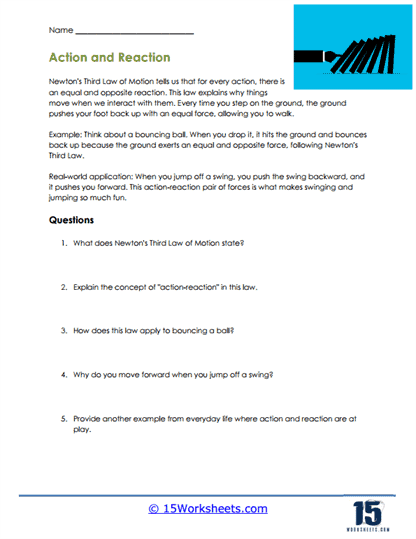Action and Reaction

Worksheet Description
The worksheet jumps into Newton’s Third Law of Motion, emphasizing the principle that every action has an equal and opposite reaction. It sheds light on why certain phenomena occur, like the recoil experienced when stepping on the ground or the bounce of a ball after it’s dropped. The document offers illustrative examples such as the dynamics of bouncing a ball and the forces in play when jumping off a swing. Furthermore, it invites learners to explore real-world applications, bridging abstract scientific principles with tangible experiences.
To grasp the concept of “action and reaction,” one should start by understanding that forces always come in pairs. When an action is exerted on an object, that object will exert an equal force in the opposite direction. Observing everyday occurrences, such as dropping a ball or pushing off from a swing, can provide visual and tactile representations of this law in action. Over time, through repeated observation and reflection, one can internalize the consistent and ubiquitous presence of this principle in the world around them.
This worksheet aims to instill a foundational understanding of Newton’s Third Law of Motion in students. Through explanations and illustrative examples, it introduces the idea that forces never act in isolation; they always come in pairs that are equal in magnitude but opposite in direction. By integrating real-world scenarios, the worksheet endeavors to make the law relatable and comprehensible. The ultimate objective is to cultivate an intuitive sense of the “action-reaction” principle and its pervasive influence on everyday events and phenomena.
